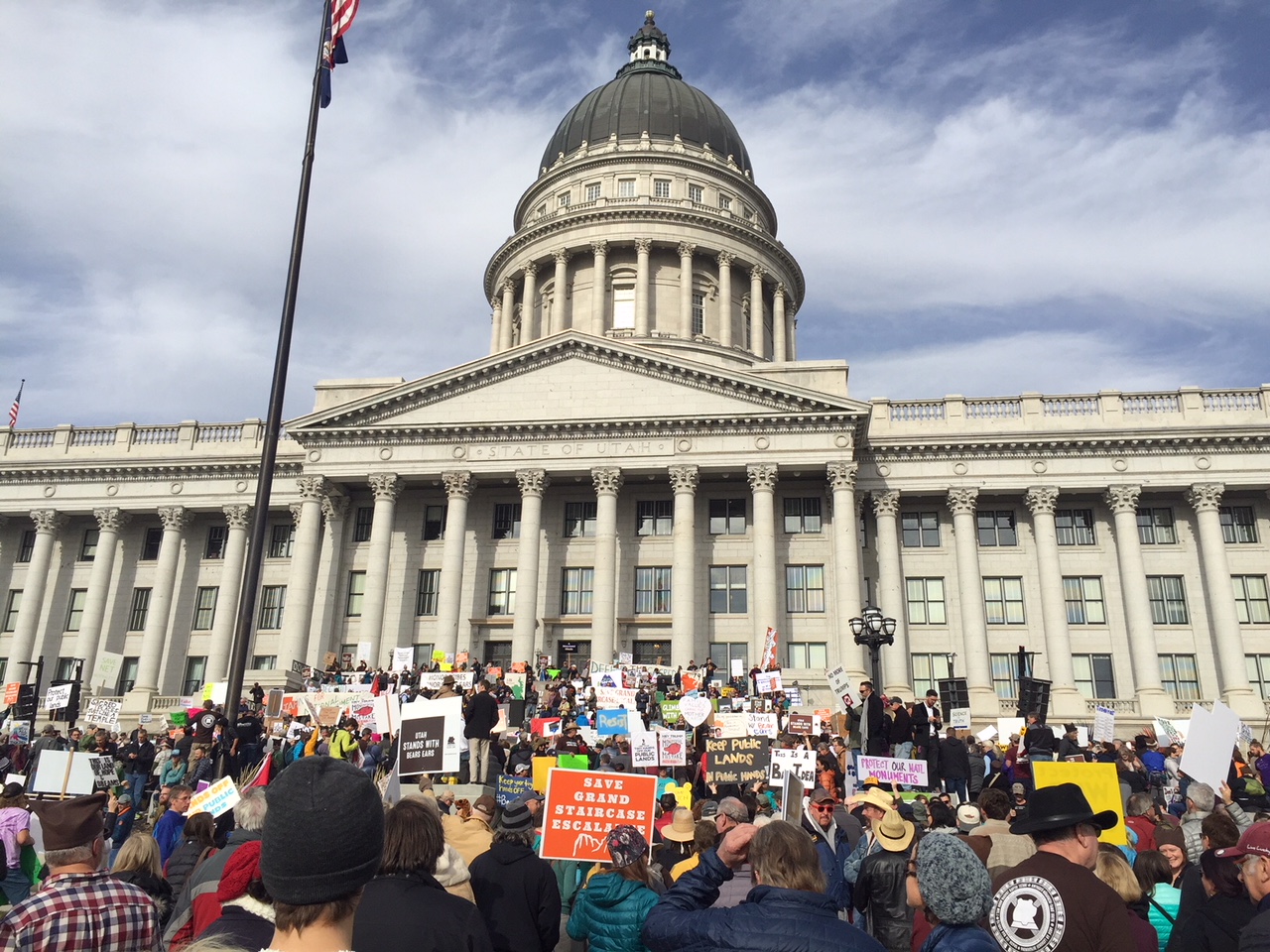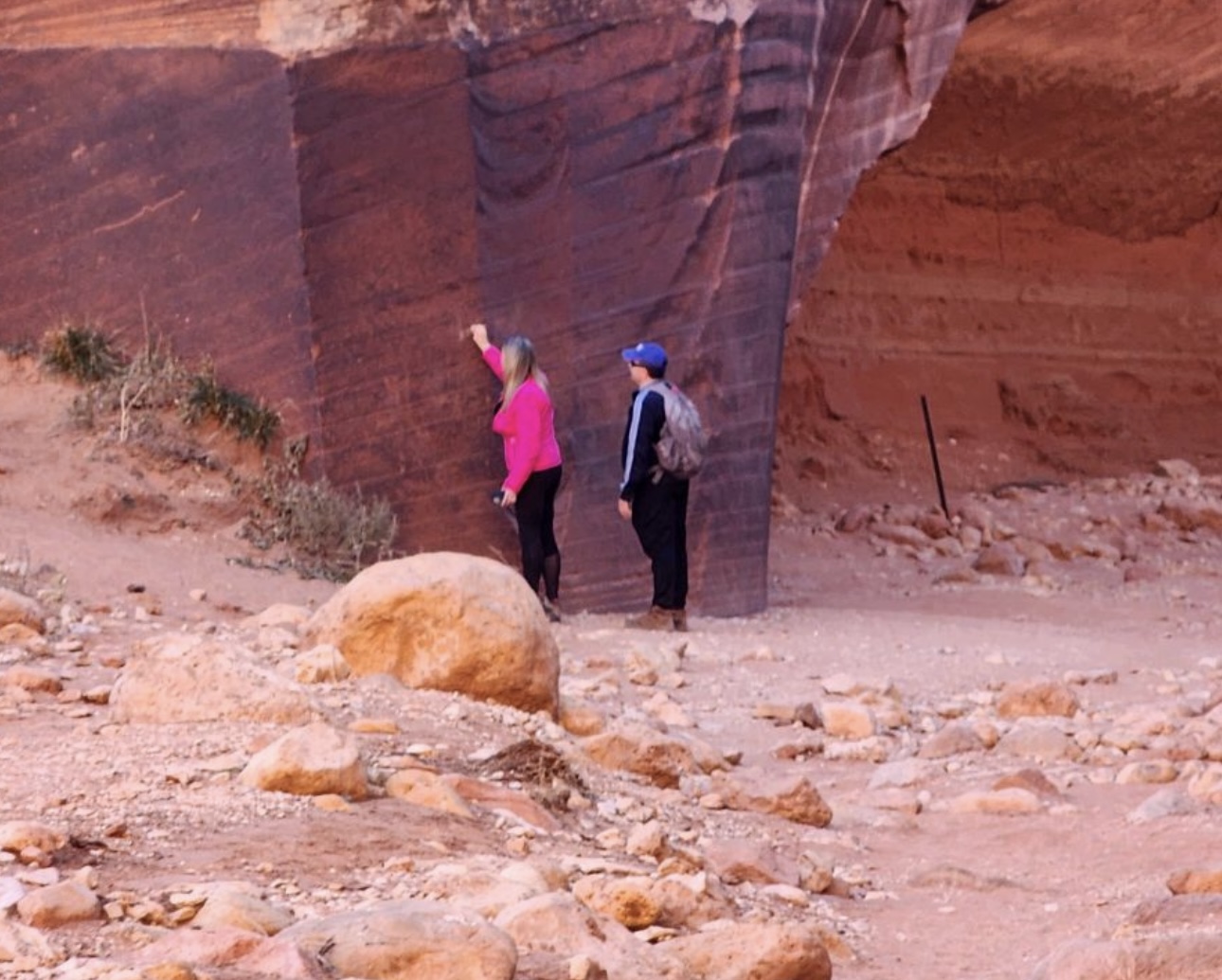Some information may be outdated.
President Donald Trump did not exactly surprise public lands stakeholders when he came to Salt Lake City this week and signed a proclamation that dramatically reduces Bears Ears National Monument to about one-seventh of its initial size.
But even after months of anticipation that Trump would act as he did, emotions on both sides of the issue remained as high as they were almost one year ago. That’s when former President Barack Obama established the 1.35-million-acre monument on existing federal lands in San Juan County.
Monticello resident Kim Henderson said that Trump’s action corrects what many San Juan County residents perceive as federal overreach under the former Obama administration. Yet as a community, Henderson said that she and other Monticello-area residents want to see the land protected, contrary to some media reports which portray them in a different light.
“The false narratives have all been so frustrating because San Juan County has been tainted as anti-public lands,” Henderson said. “We all find (the land) sacred on different levels for different reasons.”
In Grand County, however, reactions to the president’s move were decidedly more mixed, and many residents have been sharply critical of the Trump administration’s move to undo his predecessor’s conservation legacy.
“I think it’s a bad idea, because those areas need protection,” Moab resident Brett Bentley said.
Moab resident Lisa Carter said that Obama’s original proclamation didn’t limit any activities within the new monument, aside from new drilling or mining, and she believes that Trump – “like a whole lot of people” – has his facts wrong.
“I don’t think it’s because of his background,” she said. “I really think he’s ill-informed.”
Trump’s Dec. 4 proclamation splits the monument into two widely separated pieces that total just under 202,000 acres: The 129,980-acre Shash Jáa Unit is centered largely around the Bears Ears Buttes west of Blanding, and the 71,896-acre Indian Creek Unit is near Canyonlands National Park’s Needles District. At the same time, it specifically removes the Cedar Mesa and Elk Ridge areas northwest of Bluff, as well as Lockhart Basin southwest of Moab, from the monument’s boundaries.
In a separate order, Trump reduced the size of the 1.9 million-acre Grand Staircase-Escalante National Monument in south-central Utah.
It’s unclear, though, how long the president’s orders will remain in place: The Navajo Nation and other tribes, as well as state and national environmental groups, filed suit the same day to prevent them from taking effect.
The tribes are asking a U.S. District Court in Washington, D.C., for injunctive relief that requires Trump to rescind his Bears Ears order, or prohibits him from enforcing or implementing it in any way. Among other things, the tribes argue that Trump exceeded his limited authority under the law, while violating the federal Antiquities Act of 1906, as well as the separation of powers under the U.S. Constitution.
Bentley, for one, would like to see the appeals drag on and on, thereby preventing Trump’s order from undoing Obama’s proclamation.
“I hope they tie it up for years,” Bentley said. “It would be a travesty (if Trump’s order stands).”
Former Grand County Council member Lynn Jackson, who worked for the U.S. Bureau of Land Management (BLM) for more than 30 years before he left the agency, suspects that the legal battles will probably go on for a decade.
In the meantime, Jackson expects that the BLM will follow its 2008 Resource Management Plan for much of the contested area. That plan, he said, recognizes the importance of outdoor recreation in southeastern Utah.
“We knew at the BLM that recreation was the driving economic force in this region,” Jackson said.
Both presidents under fire for actions under Antiquities Act
Obama invoked his powers under the Antiquities Act on Dec. 28, 2016, to establish the monument that stretches – or stretched – roughly from Goosenecks State Park in the south to Dead Horse Point in the north, centered around the namesake buttes. His proclamation said it’s in the public interest to protect the Bears Ears’ cultural and archaeological resources, including ancient cliff dwellings, rock art, traditional hunting and gathering areas, and ceremonial sites that are sacred to many tribes throughout the Four Corners region.
Trump ordered a review of his predecessor’s proclamation in April, as well as a much broader examination of all Antiquities Act designations since January 1996 that are at least 100,000 acres in size. That broader review also extended to any monument that U.S. Interior Secretary Ryan Zinke deems to have been created without “appropriate” public input.
Henderson said the process leading up to the December 2016 proclamation was frustrating to her. That’s partly because former Interior Secretary Sally Jewell vowed that she would not make a recommendation in favor of the monument, Henderson said, unless large numbers of local residents bought into the idea.
For all of her disappointment in Obama’s move to create the monument, Henderson said she and others were heartened when Zinke visited the area in early May and took the time to meet with residents who were concerned about the designation.
“We are just as a community so very grateful that Secretary Zinke and President Trump listened to our voices,” Henderson said. “We felt that Obama and Sally Jewell ignored our voices.”
Beyond Monticello and Blanding, though, many public lands stakeholders felt the opposite was true.
While other presidents from Woodrow Wilson to Franklin D. Roosevelt have reduced the sizes of monuments that their predecessors have declared, Carter doesn’t see any precedent for the scale of Trump’s actions.
“I’m still astounded at the man’s audacity,” Carter said.
Castle Valley resident Harry Holland joined about 5,000 other people at a Dec. 2 rally in Salt Lake City in support of the monument. He took that turnout as a sign that there’s broad opposition to the president’s actions elsewhere in the state.
“There are a lot of people in Utah who are against shrinking these monuments,” he said.
When Holland heard Trump say that Obama’s proclamation limits public access to the area, he interpreted it as a twisted kind of logic.
“He somehow thinks that people were excluded from Bears Ears, and that’s not even true,” Holland said.
Oil and gas companies – and not the federal government – are the ones that would keep the public out of the area, he said, and he’s concerned about the potential for future development within the new monument.
“I don’t think we can let that happen with Bears Ears – or Grand Staircase-Escalante,” he said.
But according to Jackson, U.S. Geological Survey (USGS) and BLM resource evaluations have found that there is no potential for commercial-scale oil and gas development, or coal extraction, in the area.
“The experts are pretty much in agreement: There are no resources down there, particularly oil and gas resources,” said Jackson, who opposed Obama’s action. “… If there was something there, and something commercial, we would have known about it long ago.”
Uranium development in the area is also unlikely, Jackson said – even if that industry bounces back: In the 1950s, prospectors searched the area extensively, he said, and they mined everything they found.
While many of the accessible archaeological sites within the monument were looted extensively through the 1970s, Jackson said that a different threat has emerged since the late 1990s, due to the area’s growing popularity.
Growing numbers of visitors cause unintentional damage to archaeological resources, he said, when they pick up ancient pottery shards, climb fragile walls or do other things that they shouldn’t be doing.
Jackson holds environmental groups and others who led the campaign for a monument responsible for the impacts from increased tourism at places like Cedar Mesa. When they put Bears Ears on the map, he said, they started to draw media attention from around the world, which, in turn, has fueled visitation to the area.
“They actually killed, in my opinion, the area they set out to protect,” Jackson said.
“The ironic part of it is, if there’s now a threat of further vandalism, it’s been caused by these zealots who insisted on setting aside a 1.35-million-acre area,” he added. “That’s what’s going to bring damage to these archaeological resources.”
Holland said he agrees that overcrowding is a concern, and to address those impacts, he said, federal land management agencies should receive more money.
“They’ve got to have funding to actually go in there and let the BLM and the Forest Service and the (National) Park Service do their jobs,” Holland said. “The history down there shows there’s been a lot of abuse of those sites.”
Jackson ultimately suggested that the federal Archaeological Resources Protection Act of 1979 could be an effective tool to stop vandalism, looting or inadvertent damage to cliff dwellings and other sites.
“There’s a very effective law on the books, which has been overlooked,” he said. “If they had the funding and half a dozen rangers … that would go far, far better than just slapping an arbitrary boundary around the area.”
Curtis bill would ban mineral development inside original boundaries
Just one day after Trump made his announcement, Utah’s newest congressman added a new twist to the issue of resource protection within the original 1.35-million-acre monument.
Rep. John Curtis, R-Utah, said on Dec. 5 that he plans to introduce legislation that would prohibit oil and gas development, as well as mining, in the entire area that Obama set aside.
In a Salt Lake Tribune op-ed, Curtis said his bill would also create the first tribally managed national monument. It would also guarantee that local residents have a say in management activities, while protecting archaeological sites and preserving multiple-use access to “much of” the land for hunting, grazing and recreation, Curtis said.
“(Our) bill uses the right process to achieve these goals, with elected representatives in Congress utilizing the legislative process and constitutionally established checks and balances, as opposed to unilateral executive action,” he wrote in the Tribune op-ed.
President reduces 1.35-million-acre monument to under 202,000 acres
Appreciate the coverage? Help keep local news alive.
Chip in to support the Moab Sun News.





